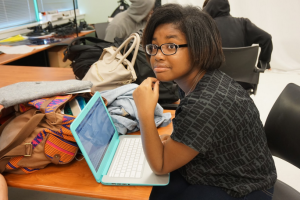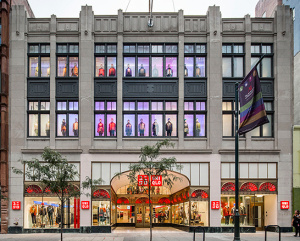Calamity Rose Jung-Allen
Staff Writer
An alarming number of Americans share a similar assumption: sexual assault is not my problem. Unfortunately, this assumption makes the problem of sexual assault even worse.
“Sexual assault is a threat everywhere,” says Chris Lehmann, principal of Science Leadership Academy. “And when you make an assumption that any space is exempt from that, you create the conditions by which it can happen.”
Colombia University student Emma Sulkowicz is currently holding an ongoing protest, called “Carry That Weight,” in which she carries the mattress she was sexually assaulted on until her rapist is expelled. Her project has drawn attention to the issue of assault in education environments, and even made the cover of the New York Times.
But what do SLA students know about the realities of sexual assault?
To get a better picture of what we’re looking at in terms of awareness, I conducted several interviews. I asked, who can a rapist be?
The response was overwhelming: anyone.
Counselor Zoe Siswick explained: “Some generalizations are that rapists are male, but anyone can be raped by anyone else.”
“There is no stereotype about who can do this,” says Lehmann.
Ben Simon elaborated further. “Anyone could do it! … Sometimes it happens because of people you don’t expect, people you think are good people.”
There are two main misconceptions about rape. One was mentioned by Siswick. Many people believe that only men can sexually assault women, but all genders are at risk (40% of rape is suffered by men!), and all genders should be aware of what they can do to protect themselves and each other.
The other speculation is that only sexual assault from a stranger is considered rape. This is completely untrue. If an encounter continues after one participant says they do not want to continue, it is rape. “It doesn’t matter how close they are to you,” says Veronica Nocella, an SLA junior. “That doesn’t mean you can’t trust anyone but it does mean that anyone has the potential to be.”
So, is rape a threat at SLA?
“I don’t think so because the student environment of SLA does not condone rape culture at all,” says Nocella.
“It’s not something that kids at SLA engage in, as far as I know. It only takes one kid to do that, though,” explains Benjamin Simon, a sophomore. “My point is that it’s not likely, but you can never rule it out.”
Our faculty gives us a realistic outlook: “I think that sexual assault is dangerous and is a concern for anyone period, but for teenagers especially,” says Siswick. “And often times when teenagers are in situations where there are drugs or alcohol involved, it can increase the risks considerably.”
Sexual violence is a concern for everyone, and though we think of SLA as a loving, supportive and safe environment, rape can happen anywhere. It’s important to recognize this as a student body.
To further investigation the level of awareness that SLA students have of this problem, I ran a survey.
The question was: “Out of American students, what percentage do you think are sexually assaulted on campus?” The majority of answers came from SLA sophomores. The real statistic is 20%, but the answers average to about 40%.
This shows a good level of awareness within a small portion of our students. But it’s important to realize that this does not represent our school as a whole, and especially does not represent American schools as a whole. Rape is a prominent issue everywhere, and when it is believed to be obsolete, a risky expectation is made for our students.
This is an exemplary opportunity to discuss the effect of rape jokes. Though the attitude of SLA does not condone rape culture in a large way, there can be slip ups. For instance, saying the word “rape” can be triggering, especially if it is done in a joking manner. Also, when rape is accepted as a punch line in any way, it becomes less unacceptable in real life.
Lehmann summed it up best: “Students [need to] understand how words can carry profound importance … The notion that jokes aren’t always jokes. The notion that, when creating a climate of safety, it’s required that people see the power that jokes that perhaps once upon a time were far more accepted can have on others.”
It is extremely important that the public recognizes its role in rape culture, and is not only curious about the subject, but informed about how they can help the epidemic decline. It is rare that college-aged rapists are punished appropriately. This creates an unsafe society for everyone, and it is our right, if not responsibility, to put an end to it.
So, what can you do? How can we as a school community reach out and support victims of sexual violence in our circle?
First, if you are a victim, please contact a trusted adult. This can mean your parent(s), another family member, Ms. Martin, Ms. Siswick, Mr. Lehmann, or anyone else that can help. Remember that asking for help is very brave.
Secondly, if you are friends or even acquaintances with a victim, “Make them feel loved. Let them know they know they can talk to us, let them know that we’re there for them. They have a scapegoat if they need someone to cry to, talk to, help with, etc,” says Simon. Comfort them, and encourage them to contact a trusted adult.
Thirdly, educate. “Take any opportunity we can to make people acknowledge this is a problem,” Nocella tells us. “And when I say that, I mean actual education, clear directions, workshops on gender equality, that’s what‘s going to help.”
You (yes, you!) are responsible to hold the people around you to a high standard. It is your, nay our job to reach out, to raise awareness, to inform, and most of all to know: it is your problem.



